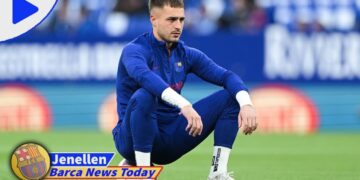Clay Holmes doesn’t have much experience starting at the major league level — his four career opportunities in the role came during his rookie season with the Pittsburgh Pirates back in 2018.
But his interest in leaving high-leverage bullpen work behind and returning to his roots as a starting rotation arm never waned over the years. He’s fully embraced a conversion plan that the Mets presented upon signing him in free agency.
“Excited to be here with the Mets. [Starting] was something I’ve always had in the back of my mind throughout my career,” Holmes said during his media availability on Tuesday. “Even throughout this year, just kind of having fun with my bullpens — I was throwing a changeup, throwing a four-seam just to keep things fun and light. Out of that, kind of realizing what could be of an arsenal. There were jokes and talks about it throughout the year.
“Toward the end of the year, there was definitely some, ‘Hey, what if this happens,’ type of thing. And then earlier in the offseason, I met with a few teams that had some interest. It kind of opened the door for a more serious conversation… I didn’t want to look back at the end of my career and say, ‘Man, what could’ve come from that?’ It was something that I still, deep down, had a passion for and excited me…”
Holmes, who signed a three-year, $38 million deal with the Mets earlier this month, isn’t expected to convert seamlessly. The 31-year-old right-hander spent each of the last six seasons pitching exclusively as a reliever, and he’s never logged more than 70 innings in a single big league campaign. But some underlying metrics explain why the Mets are taking a chance on Holmes as a rotation fixture.
While his 2024 season with the Yankees didn’t go according to plan — he was removed from the closer role in September after blowing his 13th save — he didn’t completely lose the mix of eye-popping breaking pitches that made him an AL All-Star in July.
According to Statcast, his swing-and-miss percentage (30.2) ranked in MLB’s 84th percentile, and his ground-ball percentage (64.6) ranked best in the league. Holmes ultimately regained confidence and consistency in the set-up role, finishing the season with 68 strikeouts and a 3.14 ERA across 67 appearances. He was also reliable in the postseason, as he struck out 12 batters in 12 total innings with a 2.25 ERA.
Holmes won’t be fazed by the pressure of pitching in New York — he’s used to the city’s heightened expectations. But a new set of challenges awaits him, and in regard to what he expects for his workload, the goal is to throw at least 160 innings. He’s already discussed the transition strategy with Mets pitching coach Jeremy Hefner.
“It’s hard to just put arbitrary numbers on things and say, ‘If you hit this number, that’s all you can handle.’ I don’t believe in that,” Holmes said. “I think there’s definitely things you need to monitor, to see how your body’s holding up and the strength and mobility things… I want to throw as many innings as I can…
“I have a lot of confidence in the training staff, there are things we’ve already identified that could be really big for me… How they see the workload and how they want to monitor it was appealing to me…”
Mets president of baseball operations David Stearns recently revealed the team’s intention to employ a six-man rotation in 2025, and Holmes is currently slotted behind Kodai Senga as the No. 2 starter. The staff could see other newcomers, however, as Corbin Burnes, Sean Manaea, and Walker Buehler remain intriguing free-agent options.
Read the full article here


























